Creating the Romulans
Writer Paul Schneider created the Romulans for “Balance of Terror”. He deliberately modeled the villains on Earth’s ancient Romans, even naming their homeworlds after the mythical founders of Rome: Romulus and Remus. “It was a matter of developing a good Romanesque set of admirable antagonists that were worthy of Kirk,” Schneider told journalists Mark Altman and Edward Gross years later. “I came up with the concept of the Romulans which was an extension of the Roman civilization to the point of space travel, and it turned out quite well.”
Story Editor Dorothy C. Fontana agreed, saying in an interview for the 2009 Blu-ray release of Season 1 of The Original Series,
They were a wonderful, wonderful enemy … to have, because we could talk about them, people had seen them once, and we didn’t know a lot about them. They were wonderfully mysterious.
Romulans would only appear once more in the three-year run of The Original Series: “The Enterprise Incident”, written by Fontana, featured the series’ first Romulan woman, and first female starship commander, played by Joanne Linville. The story was based on the capture of the American patrol boat Pueblo by communist North Korea during the Vietnam War.
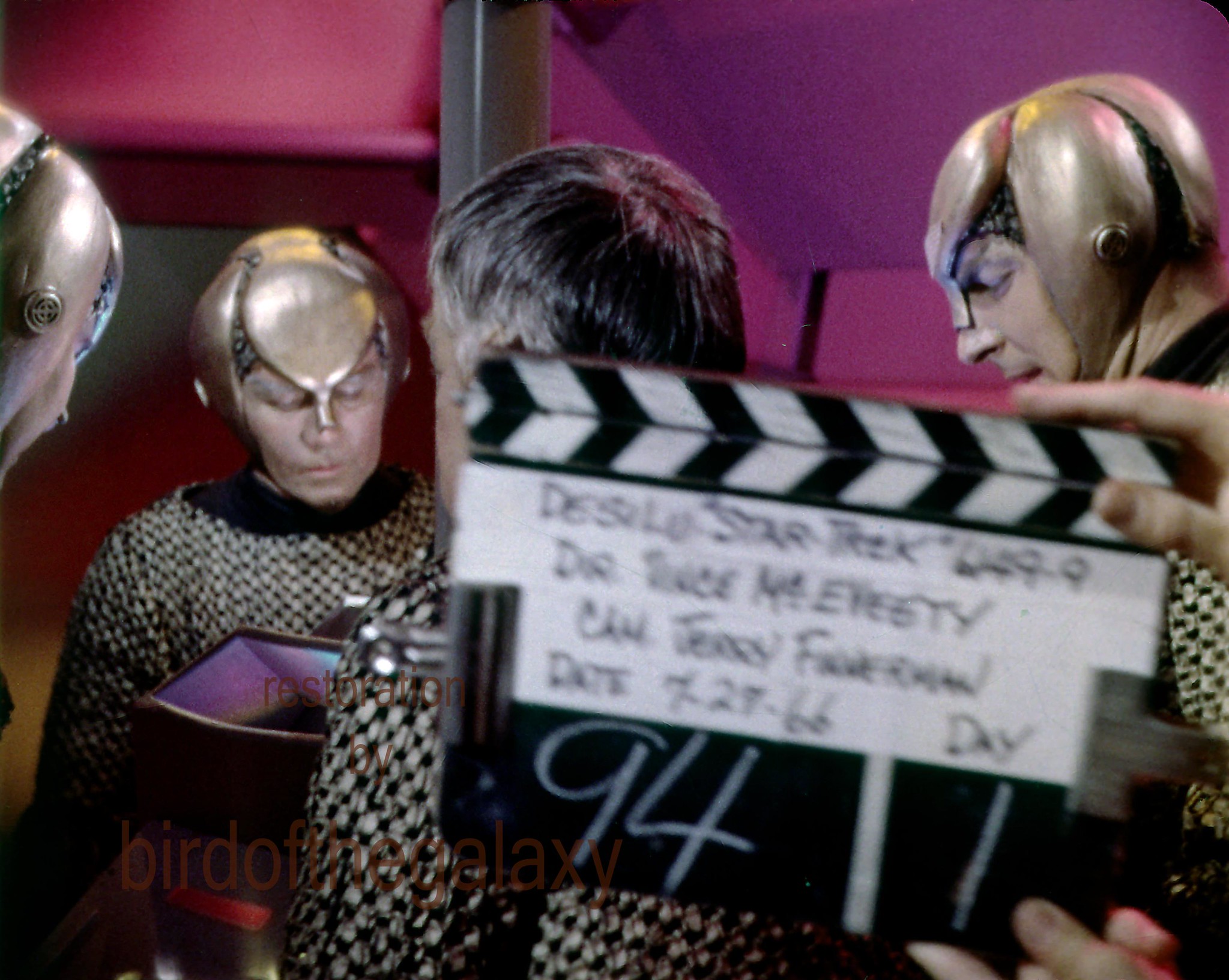
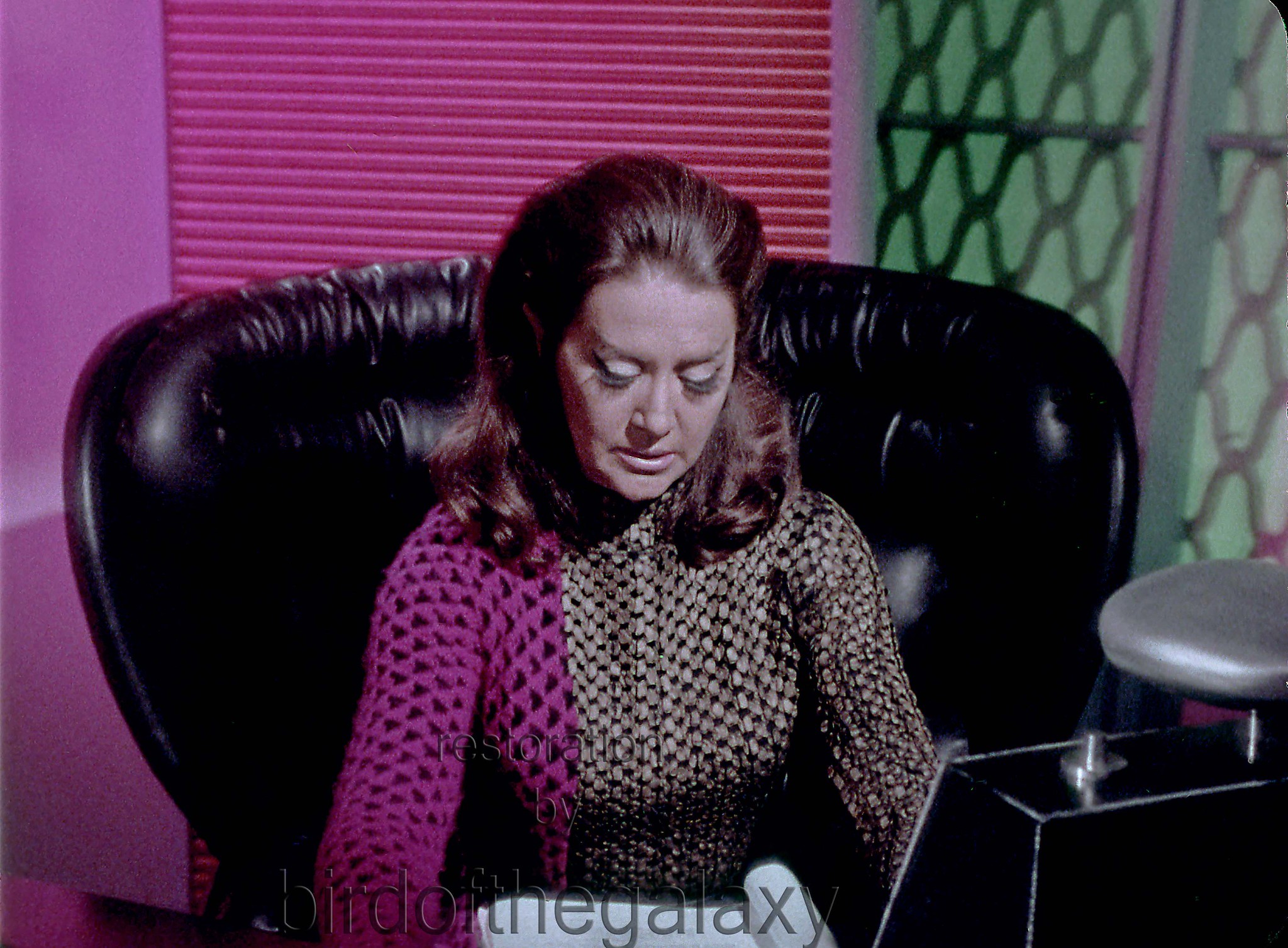
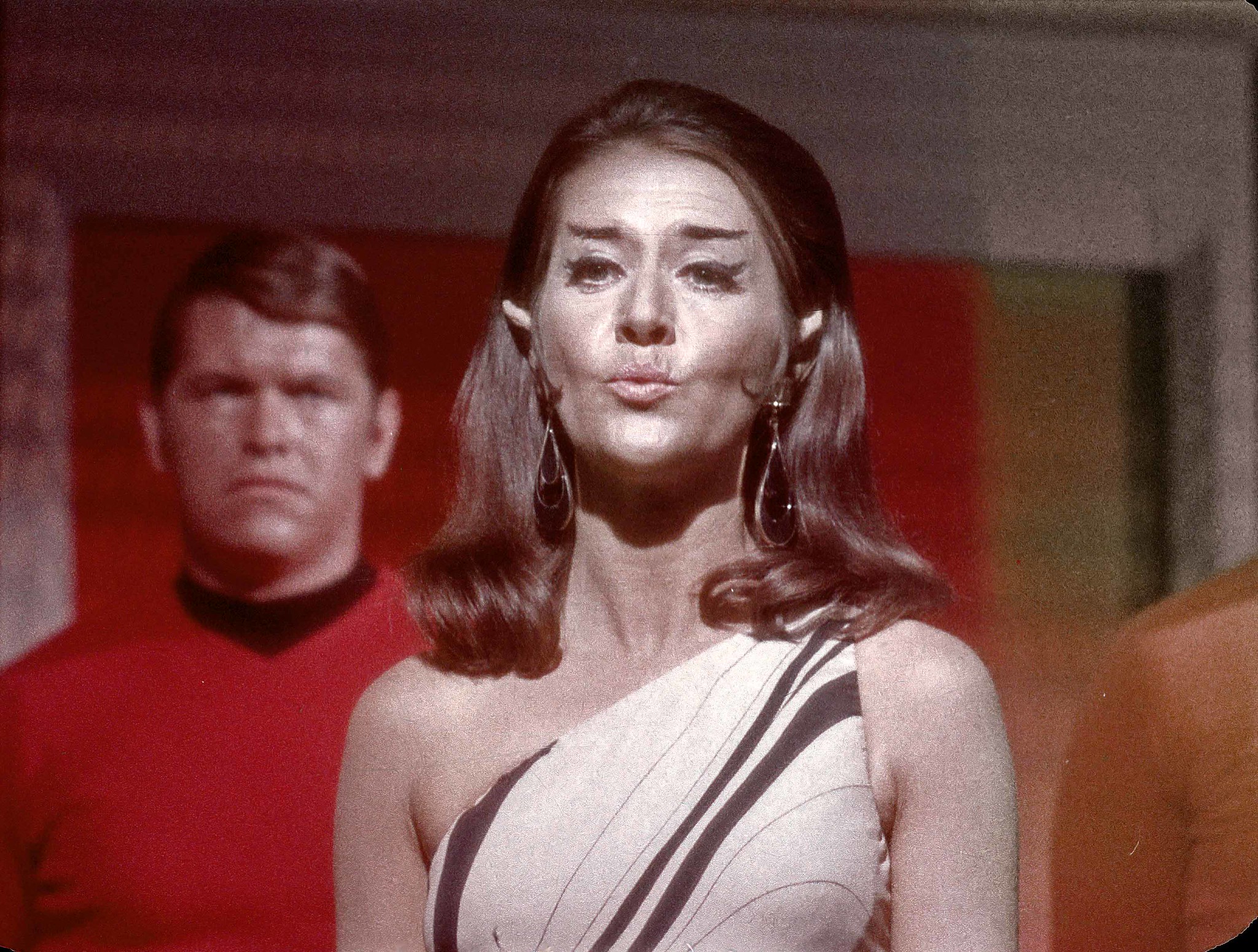
Cold War analogies
Gene Roddenberry envisaged the Romulans as Star Trek’s version of Communist China and the Klingons as its Soviet Union. In Making of Star Trek, he and Stephen Whitfield describe the Romulans as “highly militaristic, aggressive by nature, ruthless in warfare.”
It is hard to hate Romulans completely, as they often display enormous courage. Although members of a warrior society in which the strong alone survive, they live their beliefs with great integrity.
The Star Empire is described as “a dictatorship, with some similarities to the warrior-stoic philosophies of Earth’s ancient Roman Empire.” Romulan society is marked by “complete equality between the sexes; women are as often found in command of a ship as are men.”
The last element was preserved: Klingons remained the patriarchal society. But “Romulan” characteristics of aggression, courage and honor were transferred to the Klingons while originally “Klingon” cruelty, deceit and shrewdness were given to the Romulans.
Earth’s old enemy
In “Balance of Terror” we learn that Earth fought a war with the Romulans about a century prior with “primitive space vessels” and no visual contact between the two sides. A peace treaty was negotiated by “subspace radio”, which established a Neutral Zone that warships could not enter.
The best fan speculations about the history of the war are in Dan Carlson’s (unfinished) “History of the Earth-Romulan War” and Masao Okazaki’s Starfleet Museum.
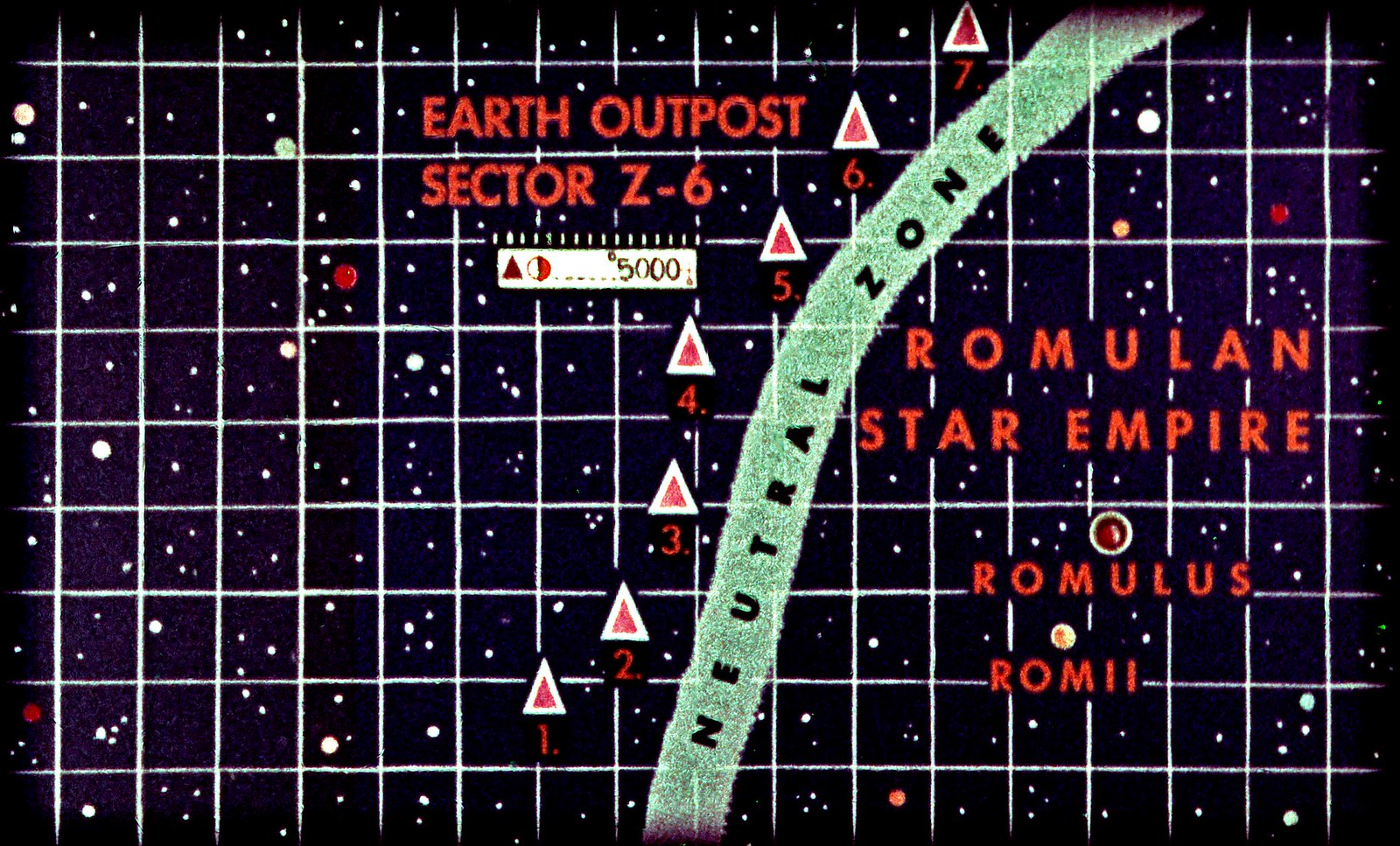
“The Enterprise Incident” hinted at a Klingon-Romulan relationship. The Making of Star Trek confirms a “recent alliance”. This was developed extensively in non-canon. The real-world explanation was that the franchise wanted to optimize use of the Klingon battle cruiser model Matt Jefferies had designed for “Elaan of Troyius”. “The Enterprise Incident” aired first, so 1960s viewers were introduced to what would later become known as the D7 as a Romulan vessel. The remastered The Original Series swapped one of the D7s in “The Enterprise Incident” for Wah Ming Chang’s Romulan Bird of Prey.
Pointy ears and V-shaped foreheads
Schneider made the Romulans an offshoot of the Vulcans. The teleplay of “Balance of Terror” describes them as “Spock-like men, dressed in military tunics with strange emblems. Like Spock, their almond-colored faces are coldly impassive.” Roddenberry, in The Making of Star Trek, calls the two races “physically almost identical.”
Which was also the reason Romulans didn’t appear more often: making Spock’s pointy ears was a time-consuming task. It took an hour and a half to apply them. Per actor. That’s why only two actors in “Balance of Terror” (including Mark Lenard, who would return as Spock’s father Sarek in “Journey to Babel”) were given pointy ears and the others helmets, designed by Chang.
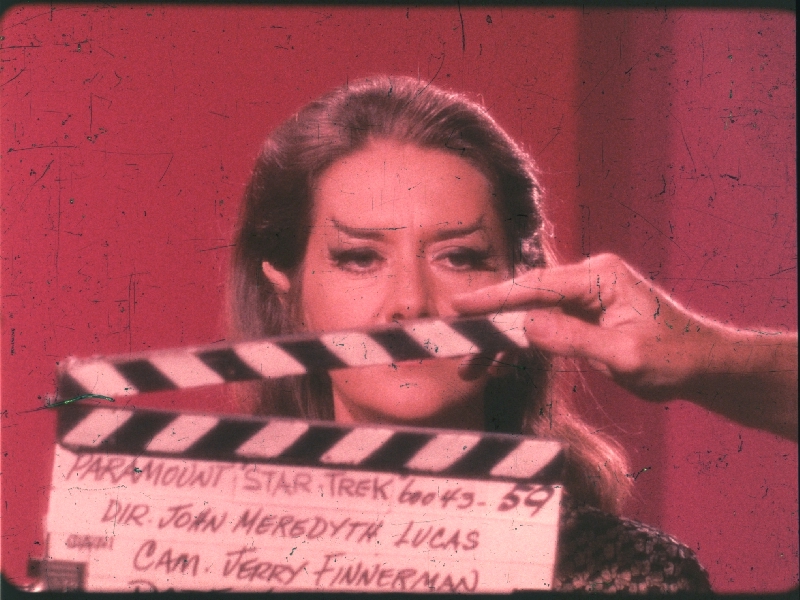

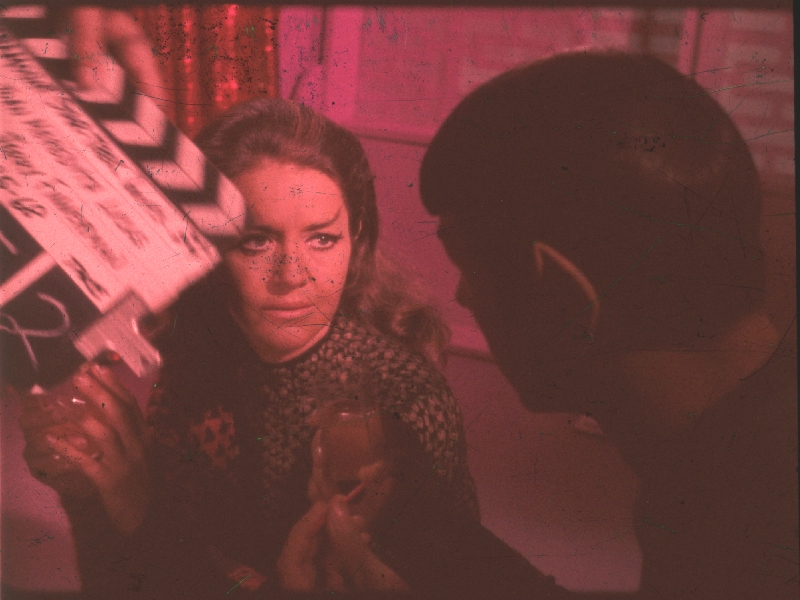
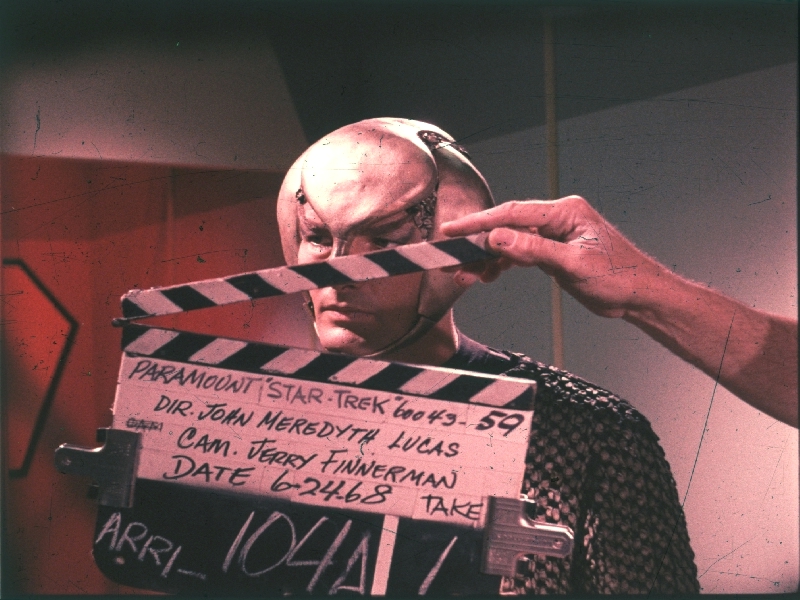

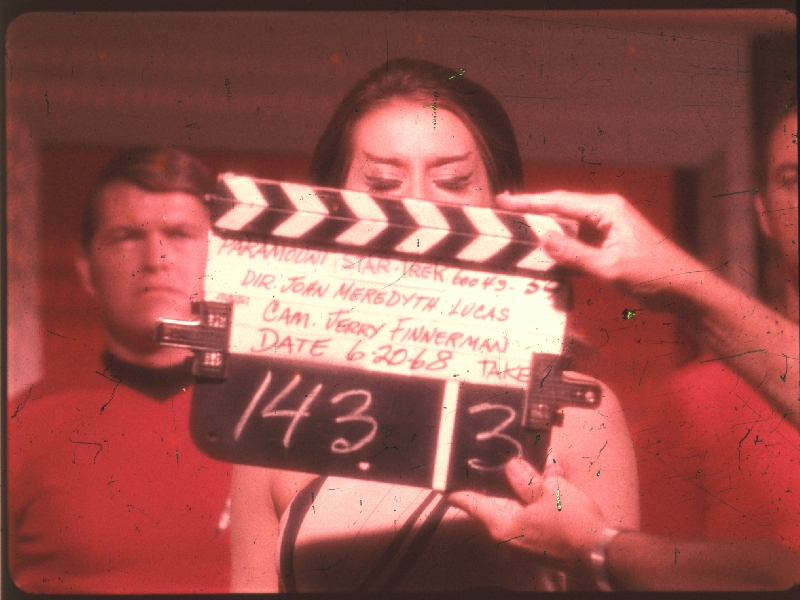
When the Romulans returned in Star Trek: The Next Generation, makeup artist Michael Westmore differentiated them a little from Vulcans. He gave the Romulans V-shaped forehead ridges. The idea was to make them look more menacing. “From the very first moment they appeared on-screen,” Westmore is quoted in Star Trek: The Next Generation 365, “the viewer had to take them seriously, rather than seeing them as stereotyped villains with pointed ears.”
We wanted to stay close to their natural forehead, not making them look Neanderthal, but giving them a built-in sullen expression they couldn’t get away from.
Not everyone approved. Writer Ronald D. Moore, who joined the show in its third season, is quoted in the same book as saying, “I hated the foreheads on the Romulans.”
The backstory was that they were basically the same race, yet somehow the Romulans got these different foreheads at some point.
Romulan characters in Star Trek V and VI – made at the same time as The Next Generation – still went without forehead ridges.
Almost villains
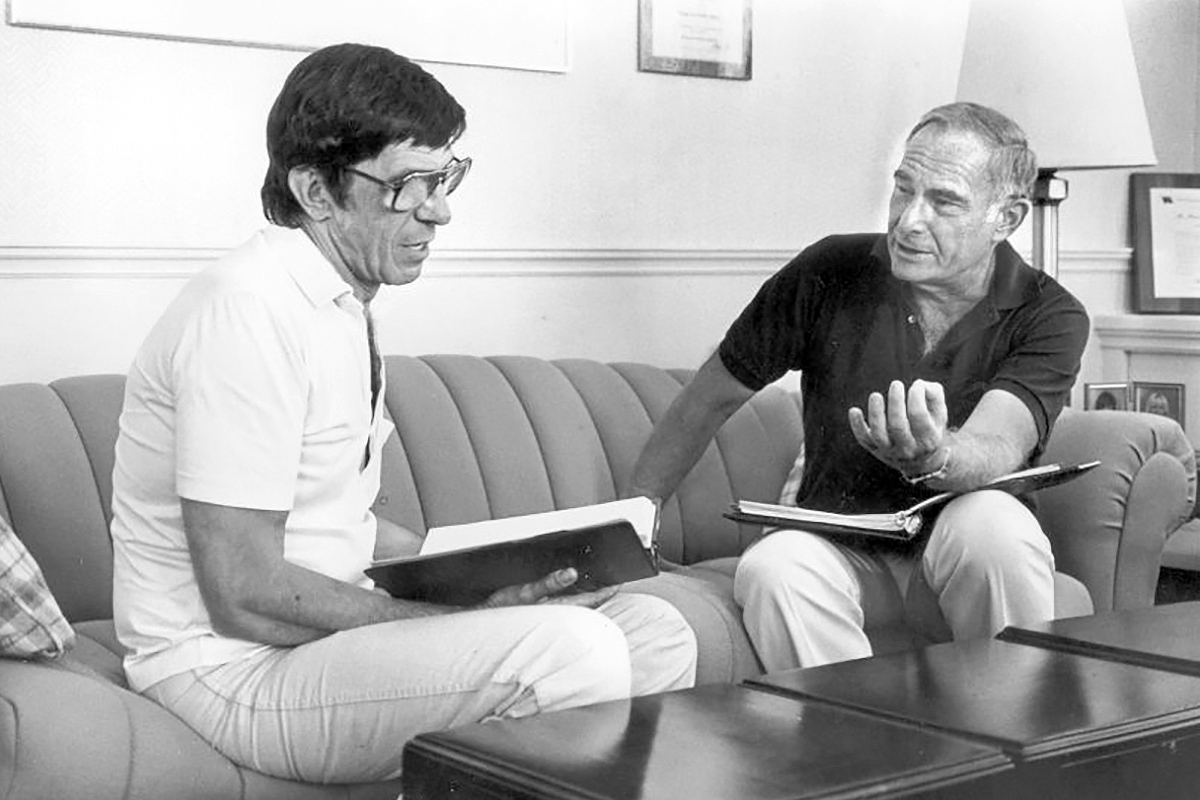
Romulans were almost the villains in two Star Trek movies.
Harve Bennett’s draft for Star Trek III had Romulans instead of Klingons discovering the reanimated Spock on the Genesis Planet, where they were setting up a dilithium mining operation. Leonard Nimoy, who directed the film, persuaded Bennett that the Klingons were more theatrical. “I was just looking for a heavy, and in the series – to me – the Romulans seemed to be more dastardly than the Klingons,” he told Star Trek: The Magazine in 2002.
At Leonard’s suggestion, we changed it to the Klingons and dug into their motivation. That gave us the perfect foil: people who would use this device for evil. And, of course, Leonard had a marvelous insight into what they should look like. His knowledge of how we could do it made the Klingons the perfect fit; we had our Nazis.
This caused another ship swap. The script referred to a “Bird of Prey”, which was a Romulan warship. Bennett and Nimoy wanted to keep the name and its cloaking ability.
After due consideration, [Nimoy] said, “The hell with it.” We agreed that the Klingons would steal the best from anybody, though we didn’t have time to show it in the story.
Fans rationalized that the Klingons must have gained cloaking technology from the Romulans in the alliance suggested by “The Enterprise Incident”.
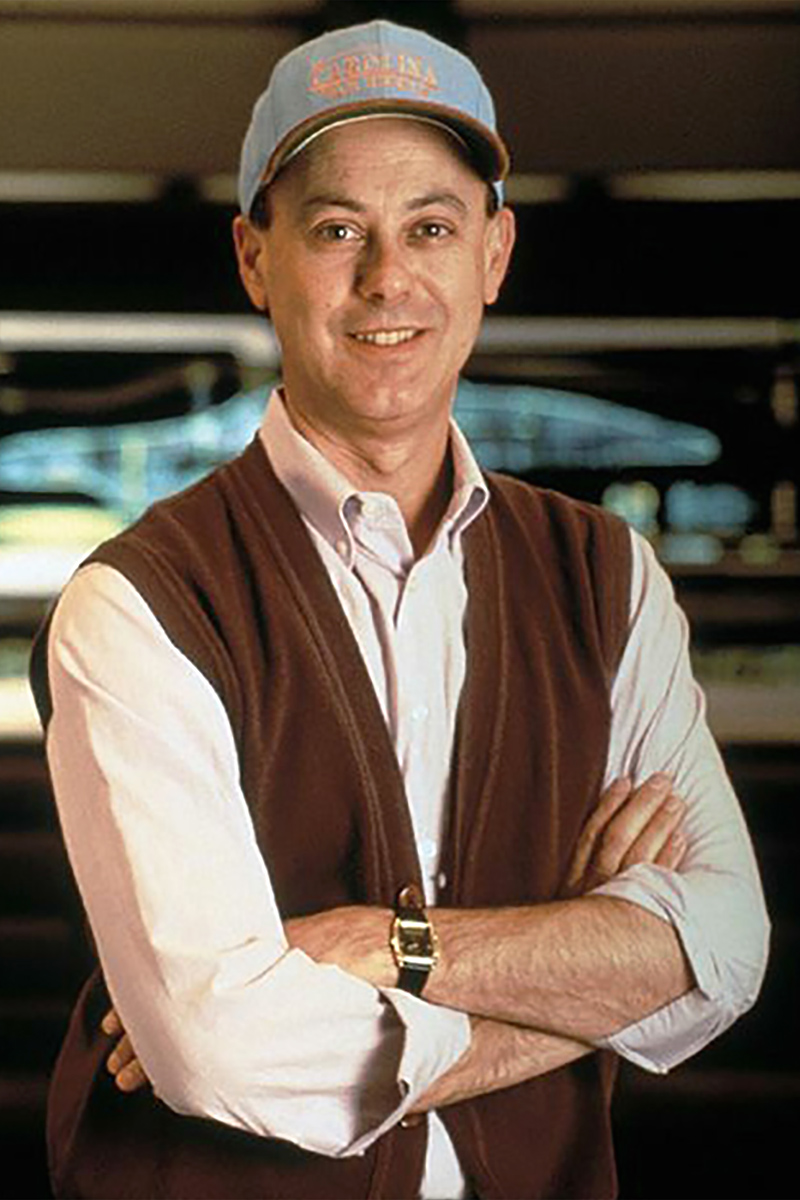
Fourteen years later, Michael Piller also thought of the Romulans when he was writing Star Trek: Insurrection. This time it was lead actor Patrick Stewart who objected. Using the Romulans was “unexciting,” he felt: it would seem as if “we just couldn’t come up with any new bad guys.”
Piller created the Son’a instead. In a twist on the Vulcan-Romulan relationship, he made them an offshoot of the Ba’ku people Picard’s crew fought to protect.
“We’re back”
Roddenbery banned the Romulans from Season 1 of The Next Generation, arguing the new series needed new enemies. But when the Ferengi failed to impress as villains, and once Picard’s crew had distinguished itself from Kirk’s, Roddenberry allowed an exception in the last episode.
When Maurice Hurley wrote the Romulans into “The Neutral Zone”, he planned to eventually unite them with the Federation against the Borg. The war, spanning multiple episodes, would have culminated in the Romulans stopping a Borg invasion and annihilating themselves in the process. Picard would have to figure out what happened. A writers’ strike nixed this plan. Hurley had to wait until “Q Who?” before developing the Borg further. Romulans were no longer involved.
Another idea that didn’t pan out: a Romulan-Vulcan alliance fighting the Federation and the Klingons in the alternate timeline of “Yesterday’s Enterprise”. This was replaced with an easier-to-explain Federation-Klingon War.
Romulans are fleshed out
Piller, who took over as showrunner from Hurley in Season 3, was excited to see more of the Romulans, telling Cinefantastique:
There is no question that when we started the third season, everybody felt we didn’t have worthy antagonists. We didn’t know if there would be Romulans or not. I went back and looked at some of the original stuff with Romulans and said, “I understand them. I can write them.”
Piller’s first Romulan episode, “The Enemy” – co-written with David Kemper – was immediately controversial. Other writers and actor Michael Dorn objected to Worf refusing to donate blood to a dying Romulan. But Producer Rick Berman had Piller’s back. “Once he was behind me, it was a race to the finish line,” Piller told Captains’ Logs: The Unauthorized Complete Trek Voyages.
And it was absolutely the right thing to do. You knew the audience was waiting for Worf to come around, because they always do that in television. But the character wouldn’t do that and I think we made a really good decision.
Romulans were predictably deceitful in “The Defector”, “Tin Man” and “Data’s Day”. “The Mind’s Eye” was more about La Forge than the Romulans who kidnapped him. It wasn’t until the two-parter “Redemption”, bridging Seasons 4 and 5, that the Romulans got more interesting. Not only did they provoke a Klingon Civil War in a bid to break up the Federation-Klingon alliance; the plot was concocted by the half-human daughter of Denise Crosby’s Lieutenant Yar, who had traveled back in time in “Yesterday’s Enterprise”.
The character of Sela was Crosby’s idea, in order to return to The Next Generation after she enjoyed reprising the role of Yar in “Yesterday’s Enterprise”. Except her Sela was the human daughter of Yar and Lieutenant Castillo, the second-in-command of the Enterprise-C, and merely raised by Romulans. In the final version, the character became the daughter of Yar and her Romulan captor.
Moore recalled:
It was tough to write and I knew it would be confusing and that, in essence, is the difficulty with doing continuity on the show. It’s fun and gives us the sense of being a real place, but you have to explain it to people who haven’t seen all those other episodes. It was not an easy explanation – that all came from Denise.
Unification
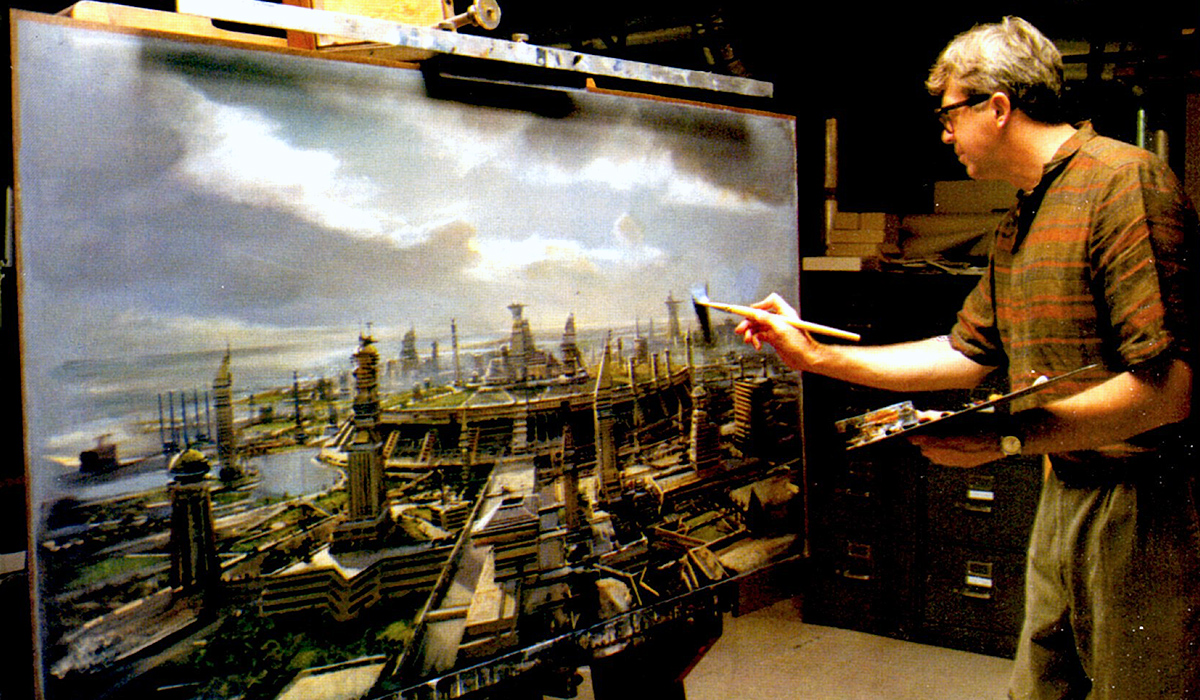
Season 5 also revealed the Romulan homeworld. Syd Dutton, who drew the matte painting of Romulus, told Cinefantastique he was deliberate about the colors and shapes he used:
The sky we choose, the lighting, even the distance between the buildings will all have an impact on whether this is somewhere you might want to visit or a place you would rather stay away from. If you’re a fascist culture, like the Romulans, we’ll try to create oppressive shapes and dark lighting that suits the personality of the species.
Nimoy appeared in the two-parter “Unification” at the suggestion of Paramount Pictures CEO Frank Mancuso. He wanted the movie franchise and The Next Generation to collaborate in order to mark the quarter-century anniversary of the franchise in 1991. That year’s Star Trek VI was an analogy to the end of the Cold War. “Unification” was inspired by the reunification of Germany.
“It became more of a show that dealt with a peaceable as opposed to a warlike element, and Leonard felt strongly about that,” Berman recalled.
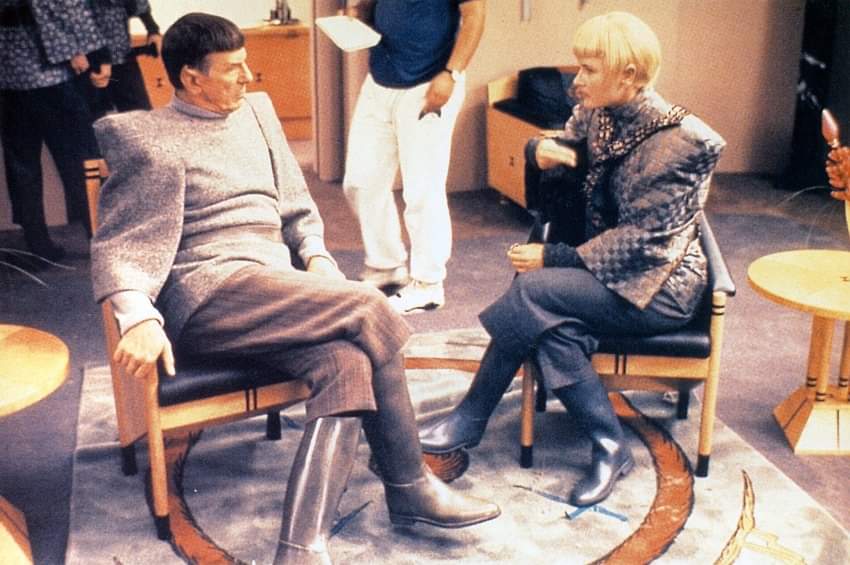
Piller added:
We’re really telling the story of the unification of The Original Series and Next Generation, symbolically closing the gap that had always been in the fans’ minds, if no one else’s, between the two shows.
Making the union even more poignant was the death of Gene Roddenberry a week before “Unification, Part I” aired. The episode was given a title card commemorating the Star Trek creator.
A more humane face
“Unification” gave viewers a more complete view of Romulan society. It turned out not all Romulans were militaristic and prone to conspiracy. Later episodes of The Next Generation confirmed this.
“Face of the Enemy”, where Troi goes undercover aboard a Romulan Warbird, makes clear there is tension between the navy and Tal Shiar secret police. “Birthright” revealed Klingons and Romulans living together in peace. “Timescape” appears to show a Romulan attack on the Enterprise, but actually the Enterprise came to the Romulans’ aid.
“The Pegasus” confounded expectations again. The Romulans are back in their traditional oppositional role, but a Starfleet admiral is the real villain.
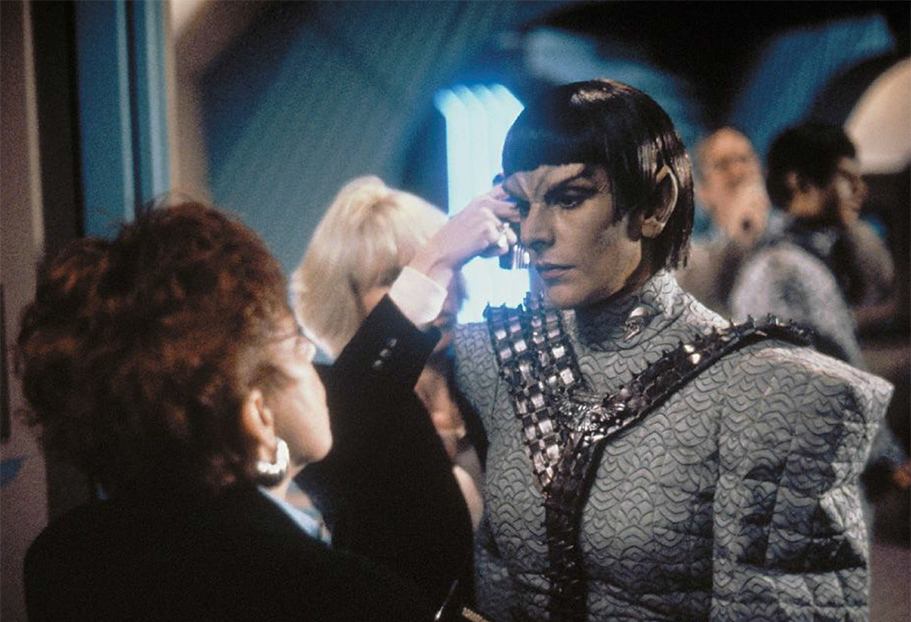

Deep Space Nine
Deep Space Nine gave Romulans more reasons to distrust the Federation. In “The Search”, the Federation considers signing a peace treaty with the Dominion that excludes the Romulans. No wonder they’re so obnoxious the next time they show up, in “Visionary”.
In “Improbable Cause”, the Tal Shiar conspires with their Cardassian counterparts to destroy the Dominion homeworld. They are outwitted by the Founders in “The Die Is Cast”.
The episodes gave Moore, who had transferred to Deep Space Nine while Piller went on to co-create Star Trek: Voyager, a chance to redesign the Romulan uniform. “I hated, underline hated, the Romulan costumes. Big shoulder pads, the quilting, I just loathed it. I begged, insisted, screamed, pleaded,” the Star Trek: Deep Space Nine Companion quotes him. Robert Blackman designed a tighter-fitting uniform for the Tal Shiar that was later given to other Romulans.
The Federation would betray the Romulans again in “In the Pale Moonlight”. A Romulan senator is given forged Dominion war plans and killed when he discovers the fake. His death is then made to look like a Dominion assassination.

Writer Michael Taylor drew inspiration from the Zimmerman telegram of 1917, in which the German foreign minister, Arthur Zimmermann, offered Mexico help to retake the Southwestern United States in order to keep America out of the war in Europe. It instead roused American support for joining the Allies. Even though, for a time, the telegram was thought to have been faked. Moore rewrote the script, but he wasn’t credited.
The Romulans became reliable allies of the Federation and Klingon Empire against the Dominion, but Deep Space Nine stabbed them in the back one more time. “Inter Arma Enim Silent Leges” frames a gregarious but war-weary senator in order to boost the career of her competitor, a Federation sympathizer. The plot was derived from John le Carré Cold War spy novel The Spy Who Came In From The Cold (1963). Little wonder Romulans are so suspicious around Starfleet.
Nemesis

After two aborted attempts, Romulans got the theatrical treatment in Nemesis, the last of the movies starring the cast of The Next Generation. Writer John Logan told Star Trek: The Magazine he was “delighted” to give the Romulans such a prominent role. “I don’t think they’ve quite been explored enough.”
Logan drew on Roddenberry’s old Communist China comparison for inspiration:
For me the Communist Chinese is a really interesting world that was never fully explored, certainly in the movies, and not even as much as I would have liked in the series, except for individual episodes. I’ve always found that sort of Byzantine structure of Chinese Communism very interesting and very provocative, and lethal in a way I never found the Klingons. There is so much duplicity and mendacity and cleverness in the way the Romulans move through their world with very strategic chess moves. And also they are an old and ancient race, like the Vulcans, so they have gravitas to them, which I find very interesting.
The planet Remus had remained a mystery since its mention in “Balance of Terror”. Logan made the planet the homeworld of a separate, and subjugated, species: the Remans. “It seemed obvious to me,” he writes in the 2002 novelization of the movie by Jeanne M. Dillard, “that the Romulans would subjugate some other race to dig dilithium for them. Much too messy for our pristine and elegant Romulans.”
Applying the forehead ridges and makeup was still time-consuming, Dina Meyer, who portrayed the movie’s Commander Donatra, told Star Trek Monthly.
The morning makeup routine consisted of me going into hair and getting my head wrapped – they make your hair all pin-curled and they put your head in a wig cap, so all your hair is pulled off your face. Then you go to the makeup trailer, where they attach the prosthetic forehead and prosthetic ear tips and then they pile on the makeup. They need a spatula to put it on, it’s so thick.

